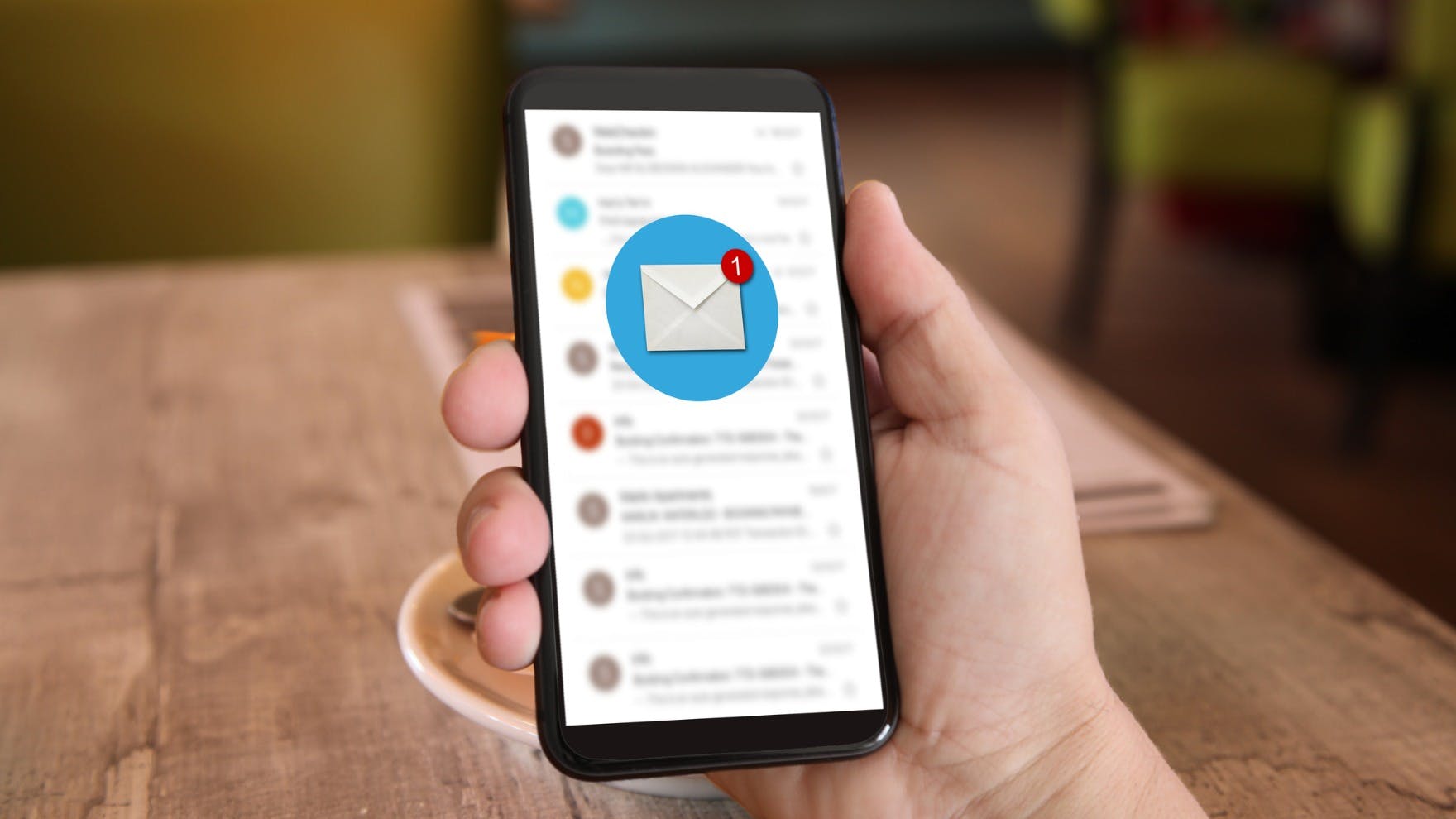60 Follow-Up Email Subject Line Examples + Tips
Casey O'Connor
With most sales requiring at least four follow-ups, the follow-up email subject line is one of the things a prospect sees most frequently. That’s why it’s so important to get it right.
Unfortunately, the follow-up email subject line is often an afterthought.
Sales reps need to remember that although the subject line is a seemingly small part of the overall message, it’s the first thing the reader sees. It can make or break an opportunity in a split second, and sales reps should consider it carefully.
In this article, we’ll go over everything you need to know about how to write an irresistible follow-up email subject line that makes your message stand out from the crowd and encourages the recipient to open it.
Here’s what we’ll cover:
- Why the Follow-Up Is So Important
- Does Your Follow-Up Email Subject Line Matter?
- Follow-Up Email Subject Line Formula
- 60 Follow-Up Email Subject Line Examples
- Best Practices for Follow-Up Email Subject Lines
Why the Follow-Up Is So Important
Many salespeople feel wary about how and when to send follow-up emails because they fear coming across as pushy or incompetent.
In fact, 48% of sales reps never follow up at all, and 44% of those who do stop trying after only the first attempt.
But salespeople who shy away from following up will undoubtedly miss out — 80% of customers say no to four follow-up attempts before saying yes on the fifth.
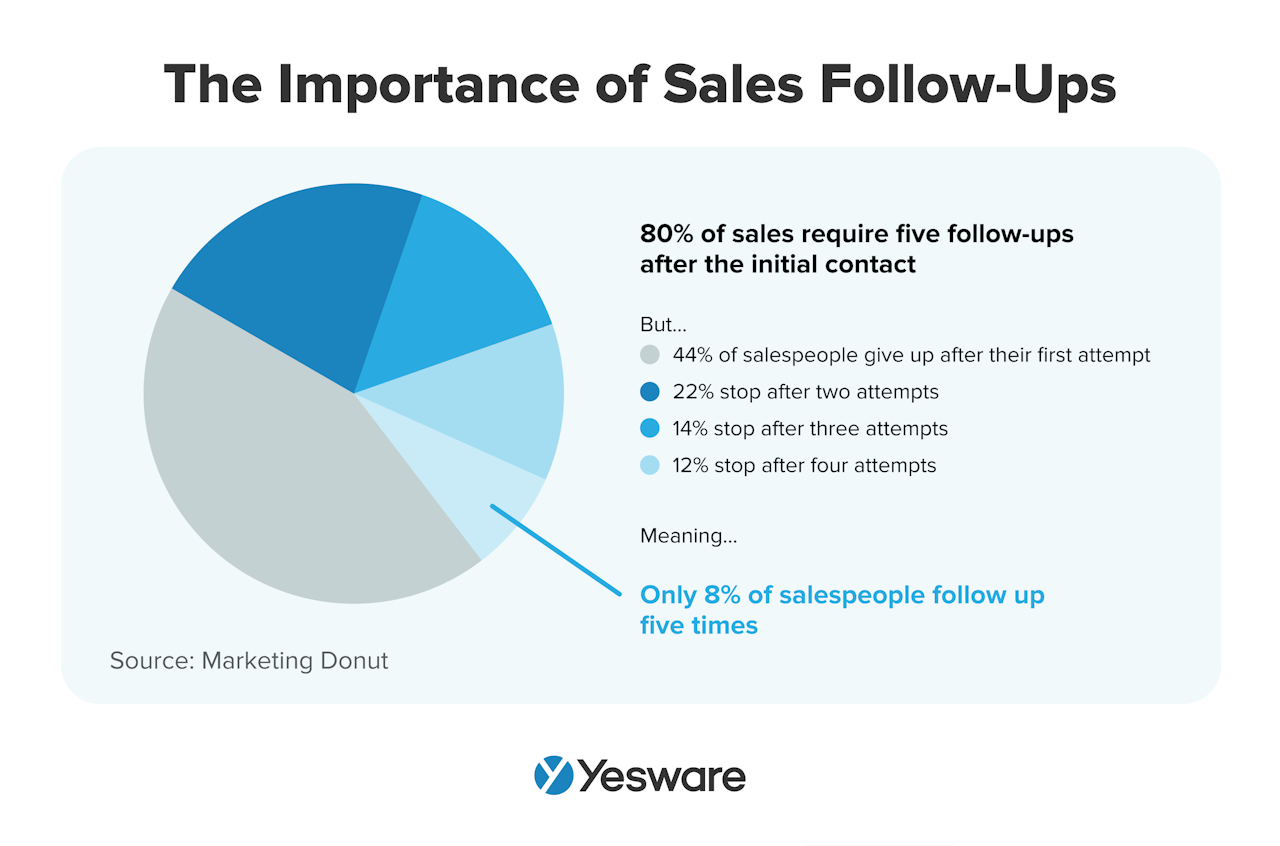 With these statistics in mind, it’s clear that the follow-up email needs to be a carefully-planned piece of your overall outreach strategy.
With these statistics in mind, it’s clear that the follow-up email needs to be a carefully-planned piece of your overall outreach strategy.
The fact of the matter is that it’s perfectly normal for a prospect to not respond to your first couple of attempts to reach them. The average email user receives over 120 emails per day — it’s no wonder some messages fall by the wayside, intentionally or otherwise.
The data shows that salespeople who are persistent with their follow-ups will reap the rewards.
But how can they ensure that their message gets noticed? It’s no small task to win the attention of the reader when there are over 100 other messages with which to compete.
That’s where the email subject line comes in.
Does Your Follow-Up Email Subject Line Matter?
Truthfully, there are some who argue that the follow-up email subject line matters less than the follow-up itself.
While it’s true that the content of your email will ultimately be the most influential follow-up content for prospects, the subject line matters, too.
Anything that’s too spammy, too long, too boring, or too irrelevant will dissuade the prospect from opening the email (or, worse, create a bad impression).
Follow-up email subject lines matter because they help create positive rapport and clear communication with prospects throughout the sales process.
This is backed by data; plenty of buyers make decisions based on subject lines alone.
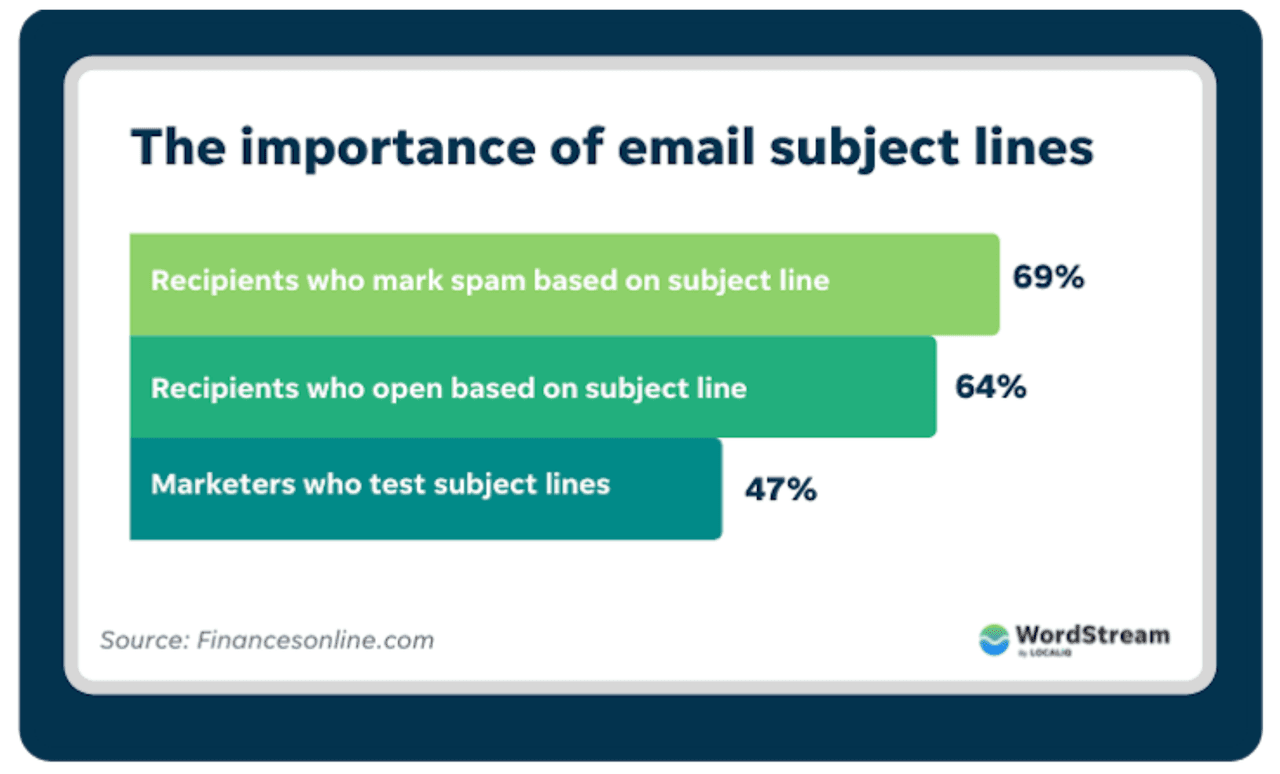
So in many cases, it’s the single deciding factor in whether or not your email gets read at all.
Let’s dive into some surefire ways to ensure your subject line stands out from the crowd and gets your email opened.
Follow-Up Email Subject Line Formula
Great subject lines have been shown to generate open rates of over 85%. That’s pretty outstanding when you consider that the average email open rate is only 12% – 25%.
Here’s how to write the perfect follow-up email subject line every time, regardless of the market you serve or the product you sell.
Get Personal
Most salespeople know that their emails should be personalized and tailored to the needs of the reader. Personalized emails generate 6x higher transaction rates than generic ones.
The same principle applies to subject lines. Many successful subject lines include the name of the reader, like the one shown below. 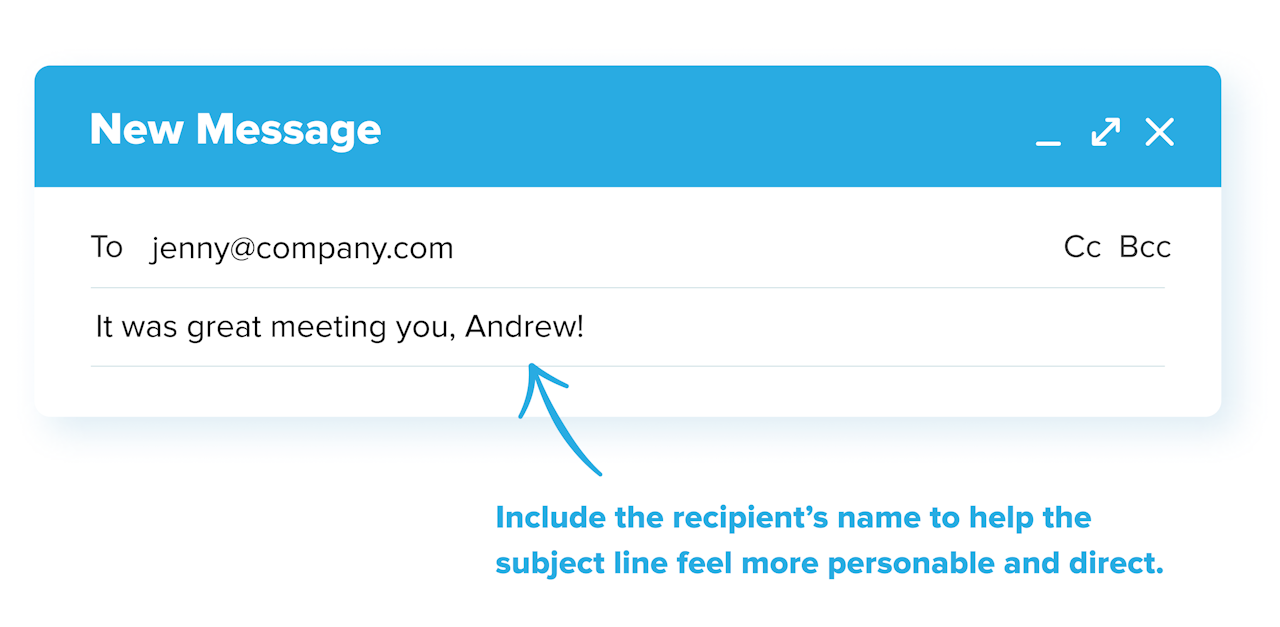 You might also reference a specific meeting date. This can jog the reader’s memory about the last time you spoke.
You might also reference a specific meeting date. This can jog the reader’s memory about the last time you spoke. 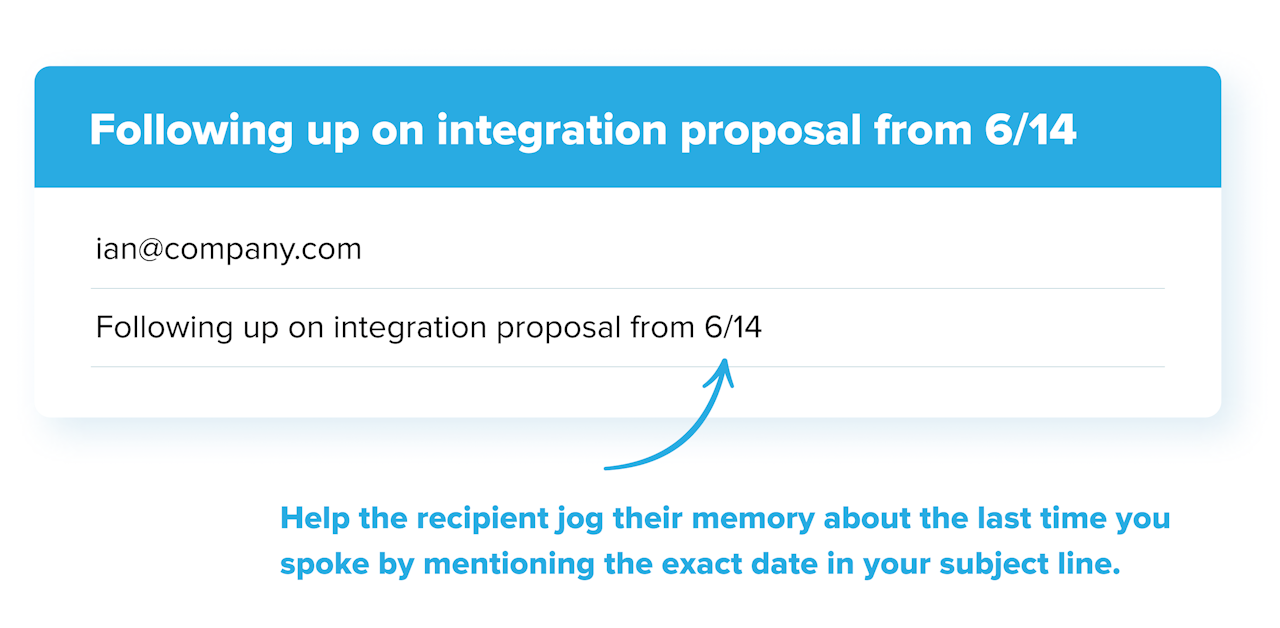 The goal of a personalized subject line is to grab the recipient’s attention among a sea of other messages in a way that makes them think, “This email was written explicitly for me.”
The goal of a personalized subject line is to grab the recipient’s attention among a sea of other messages in a way that makes them think, “This email was written explicitly for me.”
Deliver Value
Great salespeople know that their interactions with buyers should be value-based. The goal, of course, is to close the sale, but that objective is best achieved by providing value and advising prospects before they even consider signing on the dotted line.
Look at the way this subject line promises to provide a benefit to the reader. 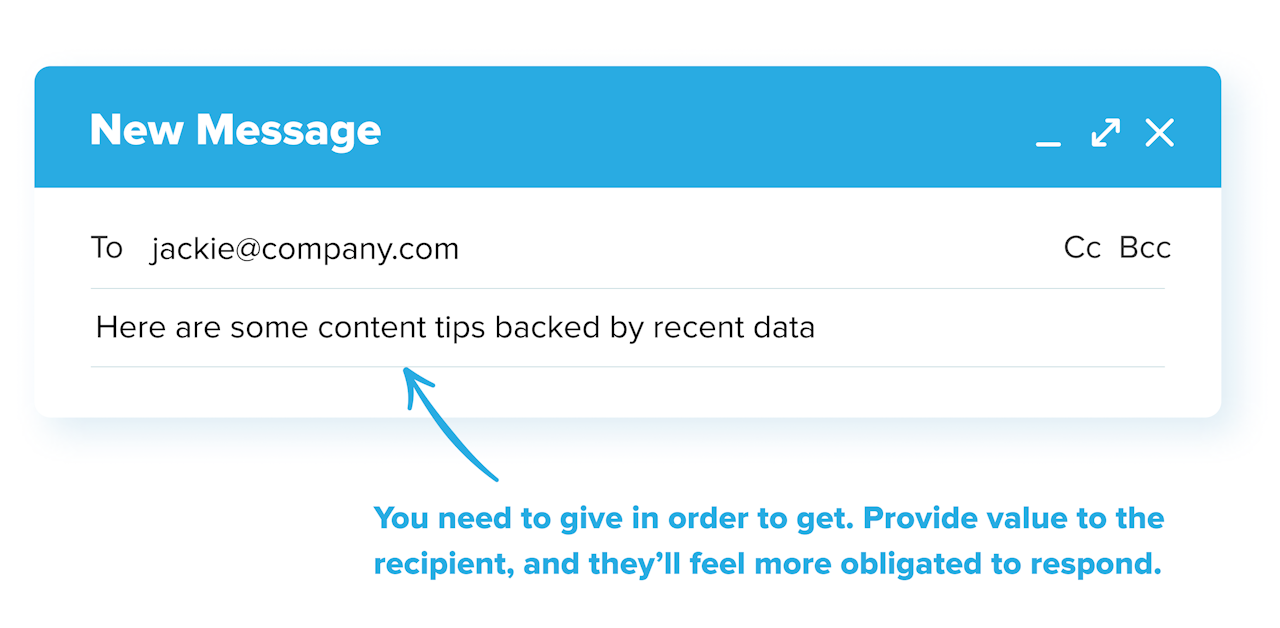 You might also reference an unanswered question from your last meeting or share a relevant blog post that you think might resonate with them. Again, make sure this content is personalized and designed to meet a specific need.
You might also reference an unanswered question from your last meeting or share a relevant blog post that you think might resonate with them. Again, make sure this content is personalized and designed to meet a specific need.
Keep It Short
The decision about whether to open an email is made in fractions of a second, and you risk losing that attention if your subject line is too long.
According to a study conducted by Retention Science, the open-rate sweet spot for most follow-up email subject lines is 6 – 10 words.
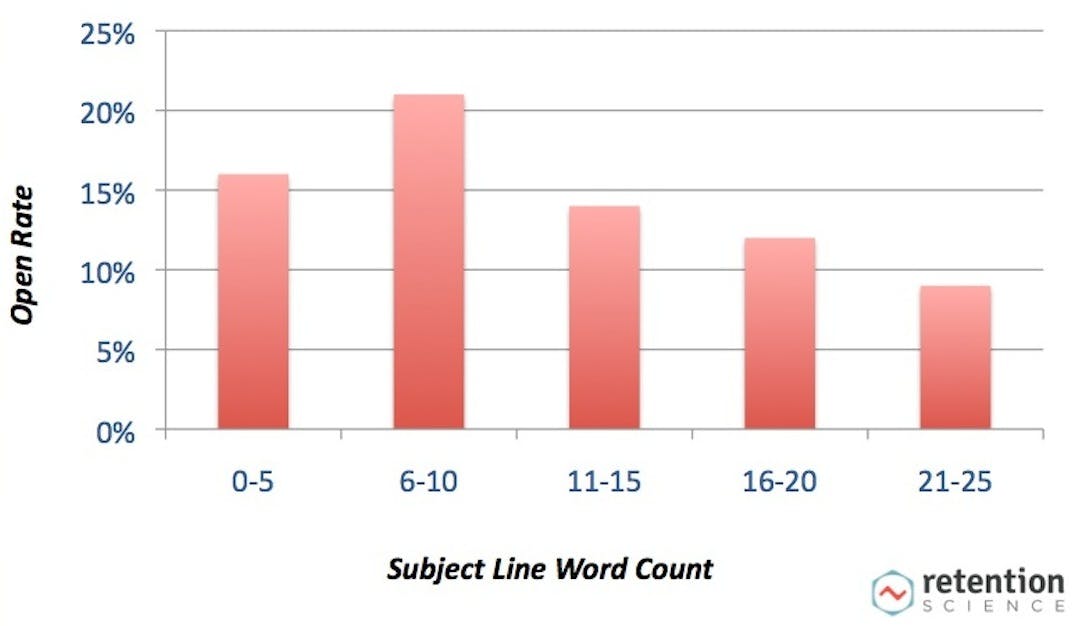 Some data-driven emailers even measure their subject lines in the number of characters rather than the number of words to account for the fact that some mobile devices truncate subject lines after a certain number of characters.
Some data-driven emailers even measure their subject lines in the number of characters rather than the number of words to account for the fact that some mobile devices truncate subject lines after a certain number of characters.
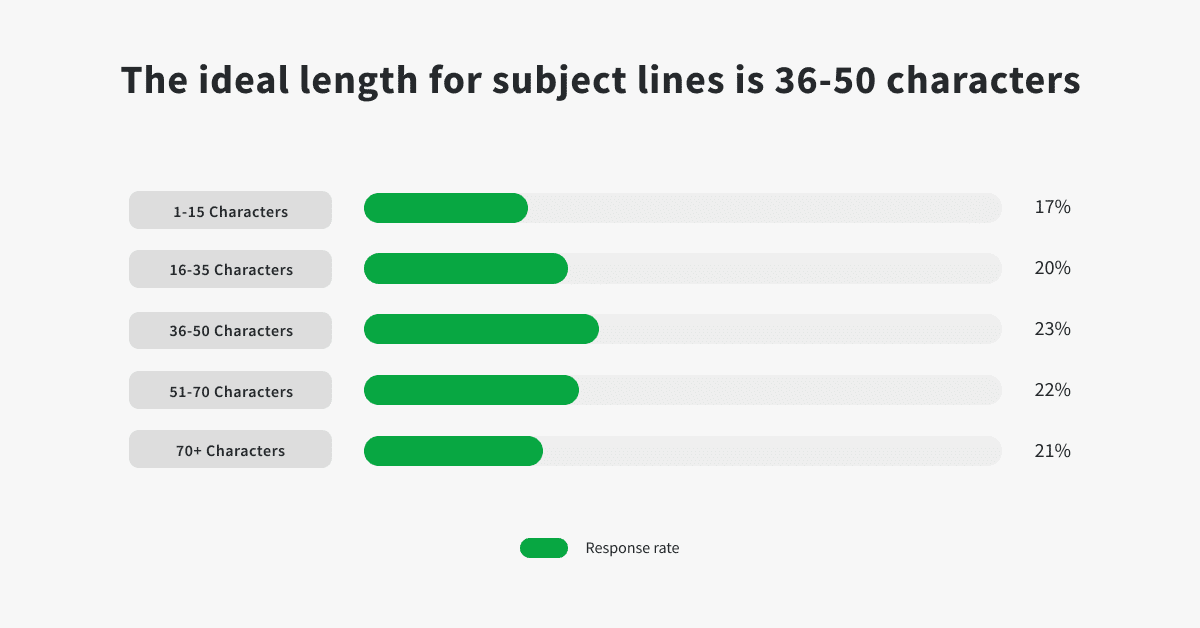
That being said, it’s always better to err on the shorter side when it comes to email subject lines.
And if it needs to be longer than 10 words, make sure the important content is at the front.
Time Your Sequence
Studies show that 63% of interested prospects will not commit to purchasing for at least 3 months, with 20% taking longer than 12 months.
This means that you need to be ready for the long haul and plan your subject lines accordingly. You wouldn’t, for example, follow up after a two-month-long hiatus with a subject line like Thanks for our meeting eight weeks ago.
Consider the cadence of your follow-up series to help you write the perfect subject lines. How frequently you reach out will help you convey the right tone, urgency, and value offering. Software like Yesware can help you automate and personalize this process.
Tip: In our sales follow-up statistics study, we found that the most successful cadence based on replies is six touches in the span of roughly three weeks.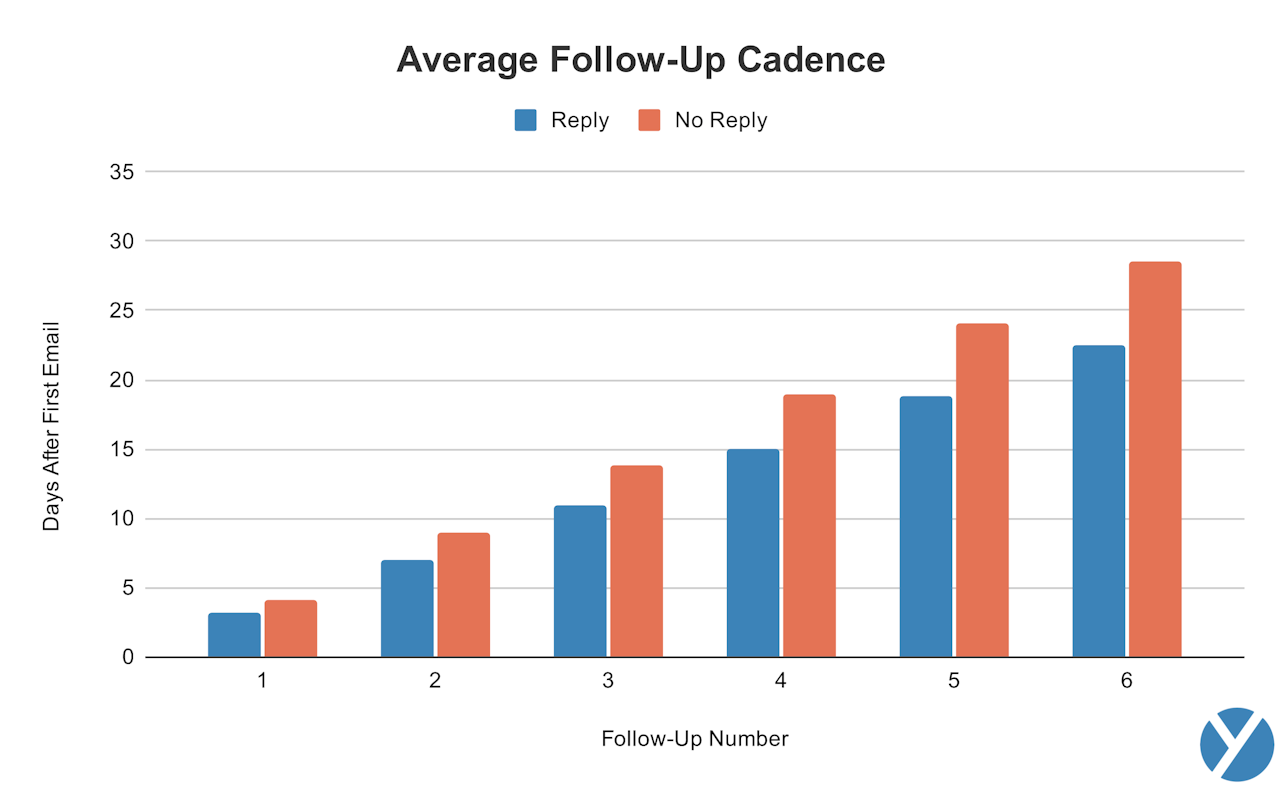
60 Follow-Up Email Subject Line Examples
We rounded up some of our favorite follow-up email subject lines that have been proven with above-average open rates. Many of them can be tweaked or adapted to fit your own personality or brand tone.
General Follow-Up
1. Hello again from {Your Name or Company Name}
2. Pleasure meeting you, {Name}!
3. Great meeting you, {Name}!
4. Hi {Name}, just checking in
5. Great chatting today, {Name}!
These subject lines are easy, basic examples of ones you can use for just about anyone with whom you’ve had prior contact. They convey a warm but professional tone and demonstrate to the recipient that you want to create a stronger relationship.
A Casual Follow-Up (With Some Intrigue)
6. Hey {Prospect’s Name}, remember me?
7. Hi {Name}, it’s me {Your Name}…
8. I’ve been thinking about what you said, {Name}…
9. {Name}, quick question from our meeting…
10. What do you think, {Name}?
These follow-up email subject lines pique the reader’s curiosity which will increase the likelihood of them opening the email in order to learn more.
Stand Out From the Crowd
11. Hey {Name}, I think I got stuck in your inbox.
12. Did you miss this, {Name}?
13. I really don’t want you to miss this, {Name}!
14. {Your company} → {Their company} (making sure this doesn’t get lost)
15. Pinging you (my last attempt)
Who among us hasn’t let an important email get accidentally buried under spam and promotions? These subject lines work because they acknowledge that the reader may have accidentally overlooked your previous email.
If that’s the truth, the reader will likely see the follow-up and open it more readily. If, on the other hand, they disregarded the original message intentionally, this subject line may make them feel just enough pressure to re-engage — no one wants to make someone else feel like they’ve been forgotten.
Offer a Specific Time
16. Free {Date} at {Time}?
17. Phone call on {Date}? 20 minutes?
18. Can we talk on {Date}?
19. Want to grab coffee on {Date}?
20. Quick question — can we chat at {Time} today?
These subject lines get right to the point by providing clear meeting time proposals. The hope here is that the recipient will automatically check their calendar. If they’re free, the subject line makes it easy to say yes. If not, they’ll ideally propose an alternative time (and if they don’t, you can follow up by asking them what works best for them).
Provide Value
21. New {Department} strategy for {Company}
22. First steps for improving {Problem}
23. Here’s the info I promised
24. I saw this on {Social Media Platform} and thought of you
25. 2 takeaways from our meeting + next steps
You really can’t go wrong with a value-based follow-up email subject line. There are a multitude of ways to frame these, depending on your last date of contact, and they can be drafted to suit the specific needs and personality of your recipient.
The value can be as simple as sharing a link to a blog post or as complex as crafting a new strategy for your prospect. Regardless, the subject line should indicate to the reader that they’ll benefit by opening your email. And, of course, make sure that the content you provide adequately addresses at least some of their pain points.
Mention a Mutual Acquaintance/Connection
26. {Mutual Acquaintance} suggested I reach out
27. I just talked to {Mutual Acquaintance}, thought I’d reach out
28. {Mutual Acquaintance} says hi!
29. {Mutual Event} was great, wasn’t it?
30. Loved seeing you at {Mutual Event}!
Showing your recipient that you share a mutual connection can fast-track your email to the top of their priority list. It’s okay to name-drop in this situation as long as it’s genuine (i.e., if you say you just spoke to them, make sure it’s true). A referral can go a long way in generating an enthusiastic response.
You can also find an easy segue by mentioning a recent event that you both attended. This is an easy way to make a connection with a prospect and get the conversation going.
Tip: Grab proven subject lines and email templates for your follow-ups below:
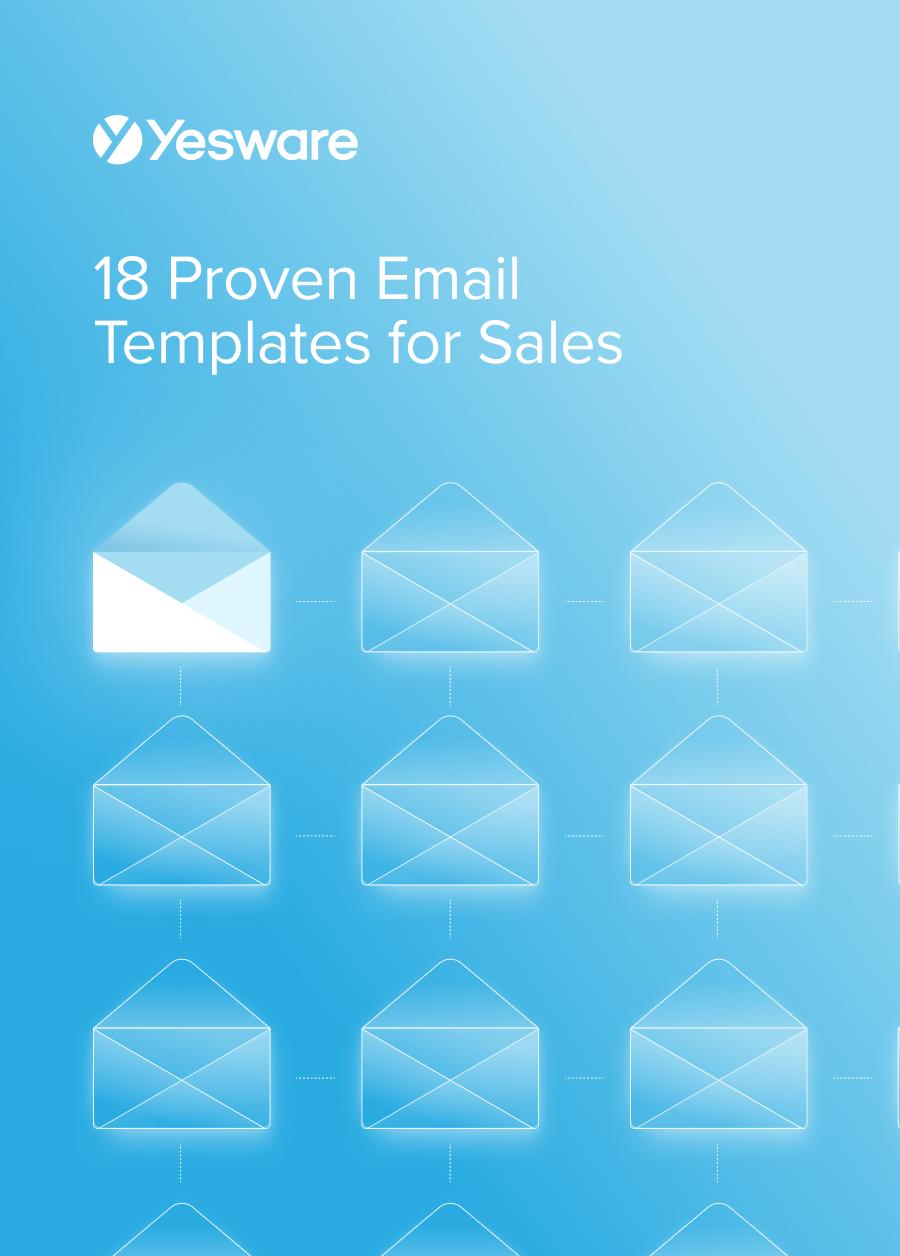 18 Proven Email Templates for SalesWinning email templates for cold outreach, follow-ups, and nurturing relationships – backed by data and real-world examples.
18 Proven Email Templates for SalesWinning email templates for cold outreach, follow-ups, and nurturing relationships – backed by data and real-world examples.
Find the Decision Makers
31. Is there someone else I can reach out to?
32. Want me to stop contacting you?
33. {Name}, are you in charge of {Task/Issue} at {Company?}
34. Am I reaching out to the right person?
35. Can you put me in touch with {Name of prospect’s higher-up}?
Sometimes, a lack of response means you’re reaching out to the wrong person. You may need to reach out to someone with a different job title.
One effective way to address this is to use your follow-up email subject line to suss out the actual decision-makers. This gives the recipient an “out,” so to speak — they can pass the appropriate contact onto you, if you give them the opportunity.
Create a Call to Action
36. Next steps for {Name}
37. To be completed by {Date}
38. Next steps for you + my team
39. Hi {Name}, here’s the offer we discussed (link inside)
40. {Name}, please set up a meeting (calendar link inside)
If you’re following up after a successful meeting and want to keep the ball rolling, try nudging the recipient to take the next step with a call to action (CTA) in the subject line.
“Next steps” gets the reader’s attention by indicating that there’s something they need to do in the near future. The alternative adds even more urgency by creating a deadline.
Appeal for Help
41. {Name}, can you help me (5 minutes max)?
42. {Name}, I need your help! Please read.
43. {Name}, can I pick your brain for a minute?
44. {Name}, I’m setting up accounts — waiting to hear from you!
45. {Name}, can you help me better understand?
Human beings are biologically wired to want to help one another — how else would our species have survived if we didn’t learn to cooperate and lend each other a hand when needed?
By writing a subject line that appeals for help, sales reps pull on that biological urge to step up and look out for one another.
Offer a Less Desirable Alternative
46. Just left you a voicemail
47. {Name}, check your voicemail!
48. You don’t want to listen to a voicemail and I don’t want to leave one (read please!)
49. Just left you a voicemail — looking forward to hearing back!
50. Did you get my voicemail?
Did you know that at least 75% of millennials avoid phone calls whenever they can?
By writing a subject line that references a pending voicemail, you nudge the prospect into opening the email rather than deal with their missed voice message.
This one is a tiny bit sneaky, so up the honesty factor by ensuring you have actually left a voicemail before using it as an “in” to get the prospect to read your email.
Hook Them with a Compliment
51. Your {product or feature} is the best in the market (I researched)
52. Just read your article, great stuff!
53. Thanks again for the great presentation yesterday
54. Saw your promotion on LinkedIn – nice!
55. I read an article about {Prospect’s company} yesterday — impressive!
You know the saying, “You catch more flies with honey than vinegar?” Well, that concept works for sales, too.
Paying someone a compliment in the subject line can be a great way to win just enough favor to get them to open your email message. Just make sure it’s genuine and relevant.
For example, don’t mention an article you haven’t read or that you disagree with. And take care to avoid crossing the subtle-but-important line from complimentary to creepy — don’t go congratulating them on their new baby if it isn’t company-wide or otherwise public knowledge.
Make It Conversational
56. {Name}, I forgot to mention this yesterday…
57. This slipped my mind during our meeting yesterday…
58. Can I have two more minutes of your time?
59. Do you have a couple more minutes?
60. One more thing from yesterday…
Making it sound like you have something to wrap up from a prior meeting — instead of a new request for another meeting or a signed contract — can give you an easy “in” with your recipient.
This is another one where honesty counts, though — don’t say you “forgot to mention” something and then conveniently neglect to bring up the “thing” you favor of pushing for an answer. That’s sneaky and manipulative.
Make sure you have a legitimate point of concern before taking this route. You can even strategically “forget” to bring something up at the meeting just for the sake of emailing later; the important part is to be honest with your follow-up.
Best Practices for Follow-Up Subject Lines
There are some best practices to keep in mind for follow-up email subject lines (bonus — these apply to cold emails, too). Keep these tips in mind to improve your response rates.
Stay Away From Click Bait
Whatever you do, avoid subject lines that contain too much hype or ones that trick the person into opening the email by alluding to something irrelevant. This is known as clickbait, and it’s a surefire way to end up in your recipient’s spam folder.
A good subject line should be enticing, but it also needs to be relevant to the body of the email.
Perform A/B Testing
If your open rates are lower than you’d like, or you find that you regularly receive no response to your emails, A/B testing is a really effective email marketing tool that will help you get to the bottom of your lack of results. 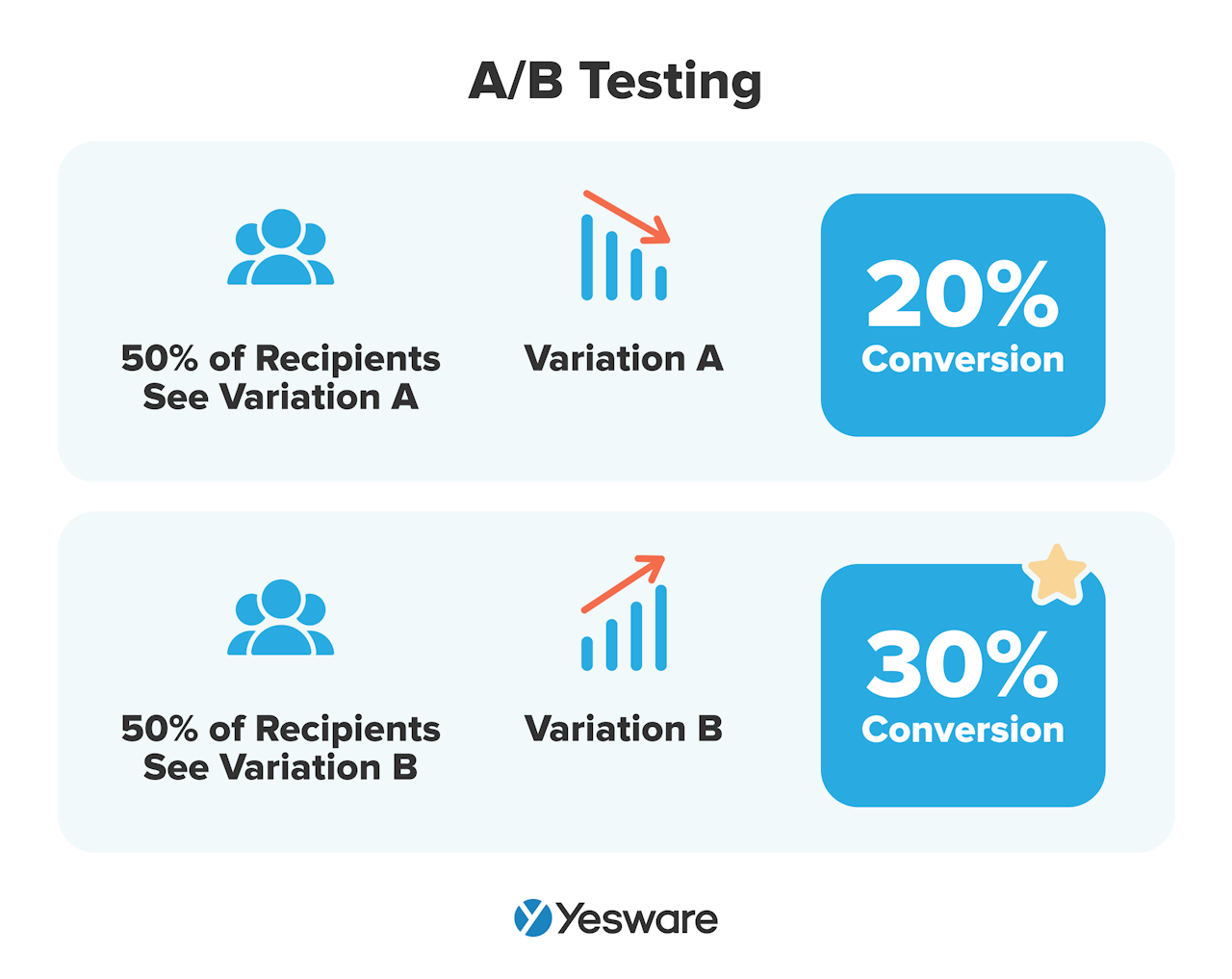 With A/B testing, you send two different subject lines to two different email lists within your target audience and compare your results. This can give you valuable data about what kinds of subject lines resonate most with your prospects and can help you design winning email campaigns that you can use over and over again.
With A/B testing, you send two different subject lines to two different email lists within your target audience and compare your results. This can give you valuable data about what kinds of subject lines resonate most with your prospects and can help you design winning email campaigns that you can use over and over again.
Consider testing out some of the following strategies in your A/B tests:
- Use a cliffhanger: A subject line that piques the recipient’s curiosity can create an intriguing first impression. Try testing lines like, “{Name}, you in?” or “{Name}, your thoughts?”. Just remember to ensure that the body of the email tracks with that kind of subject line.
- Ask for a favor: Some sales reps have success with asking the recipient to help them out with something. This strategy might work well if you’re looking for the right person to contact — “Hi {Name}, can you help me reach {Decision Maker}?” It’s harder for people to ignore a plea for help than general outreach.
- Call out their behavior: In some cases, you may consider using your subject line to directly address the recipient’s interactions with your email: “Hey {Name}, you’re not opening my emails. Is there something wrong?”. This probably isn’t the best strategy for the first email in a sequence but can work later down the line when you have data available.
Be Casual (But Not Too Casual)
Believe it or not, a subject line that’s too professional can sometimes come across as spammy. It’s okay to be somewhat casual in your subject line using some of the tactics outlined above.
Using a recipient’s name or referencing something they mentioned at your last meeting adds a personal touch and can boost reply rates. It’s also effective to use lowercase letters after the first word of the subject line; a subject line with all capitalized letters sometimes gives off a spammy impression.
Always Include Personalization
Personalized email subject lines have been shown to more than double open rates when compared to non-personalized ones.

And it’s not just open rate that personalization gives a lift — it also improves click rate, transaction rate, and revenue per email.
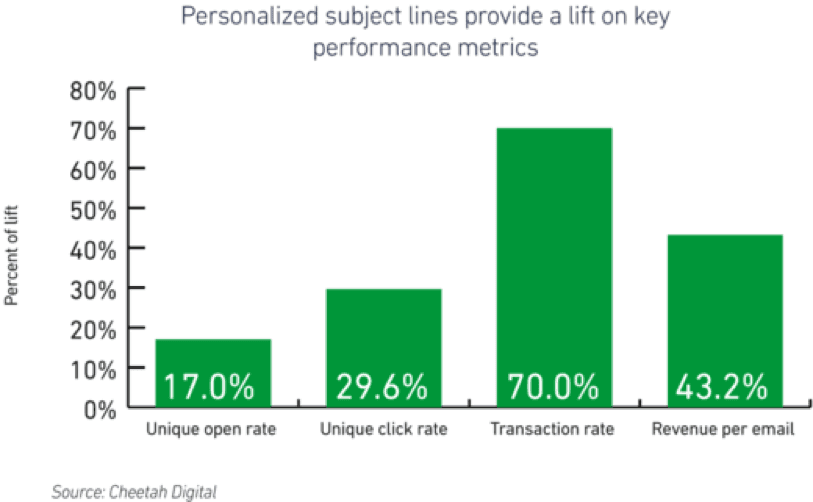
Personalization can be very straightforward with certain sales engagement software platforms and is an easy opportunity to give your emails a small edge in a prospect’s otherwise busy and spam-filled inbox.
Automate Your Follow-Up Emails With Yesware
Fortunately, automation with tools like Yesware makes following up with prospects easy, intuitive, and data-driven.
Yesware automates time-consuming manual tasks for sales reps, freeing up valuable selling time.
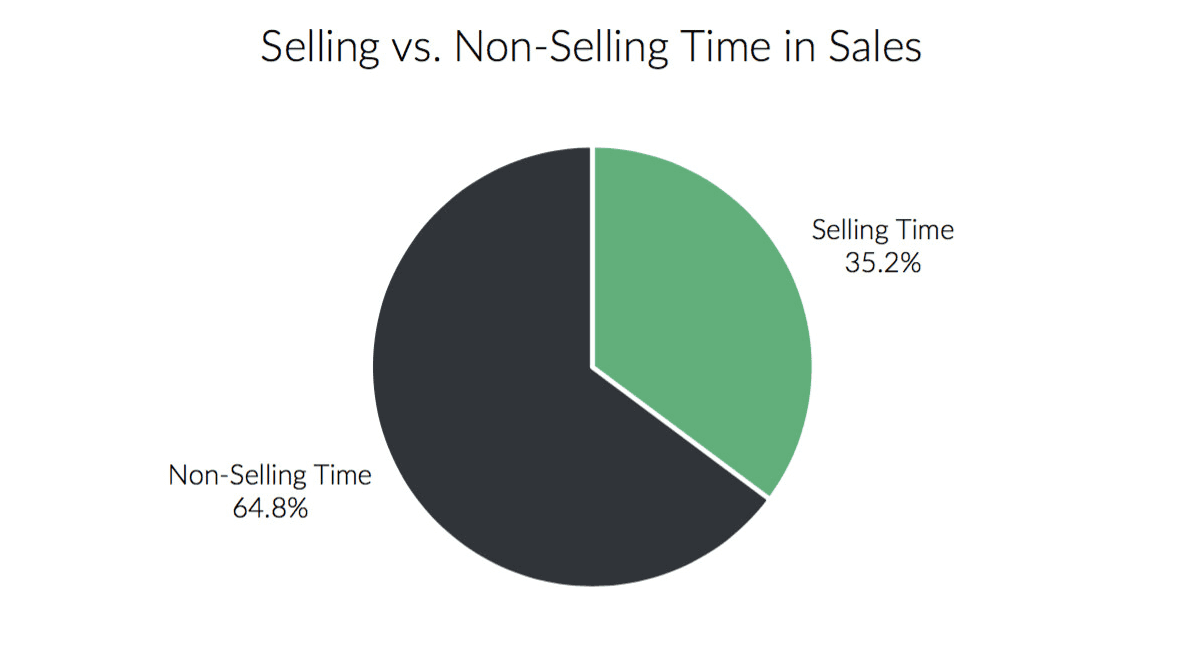
Yesware allows sales reps to test, save, and personalize winning follow-up email templates that they can easily use whenever a prospect is ready for the next step of the sales process.
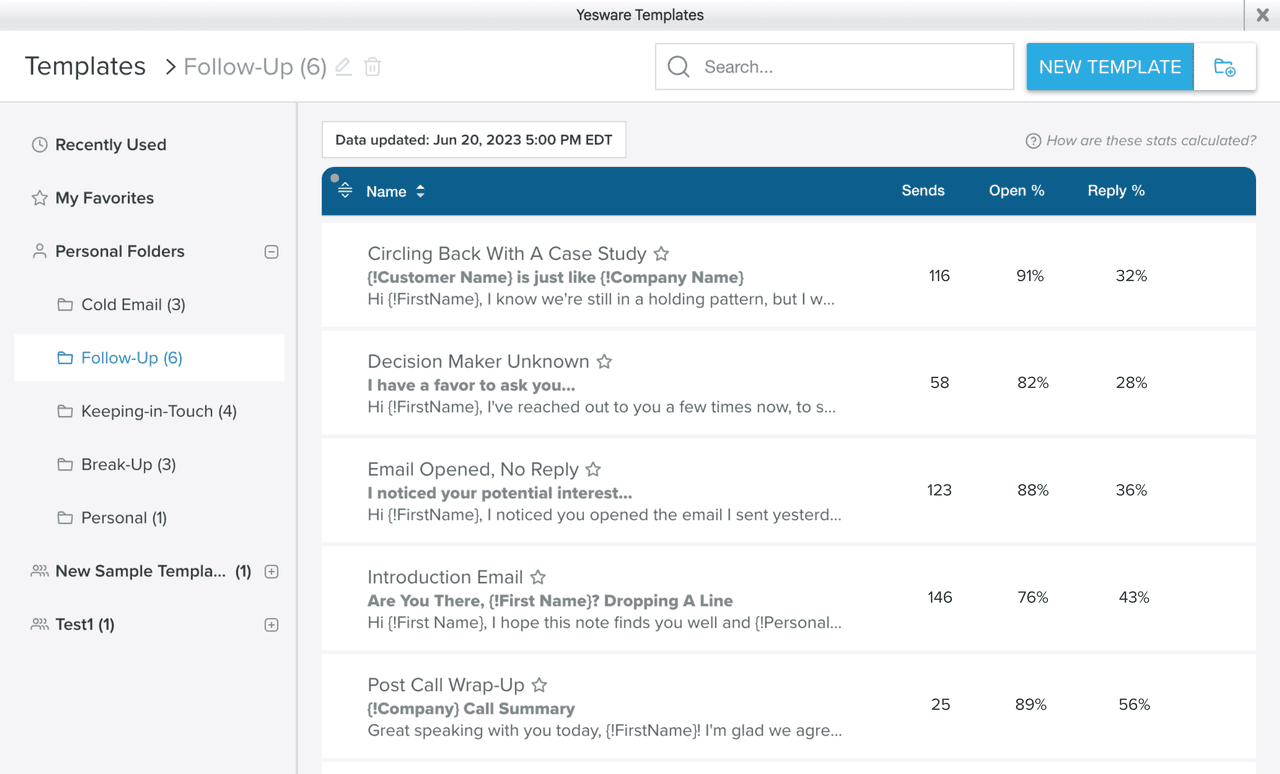
Yesware’s intelligent multi-channel campaigns allow you to send an email with multiple follow-ups that send on their own (based on the cadence you set for each touch) when prospects don’t respond to your initial email.

Our sophisticated Reporting & Analytics feature synthesizes large amounts of real-time, nuanced buyer engagement data to help sales reps discover their most effective follow-up templates, content, and campaigns.
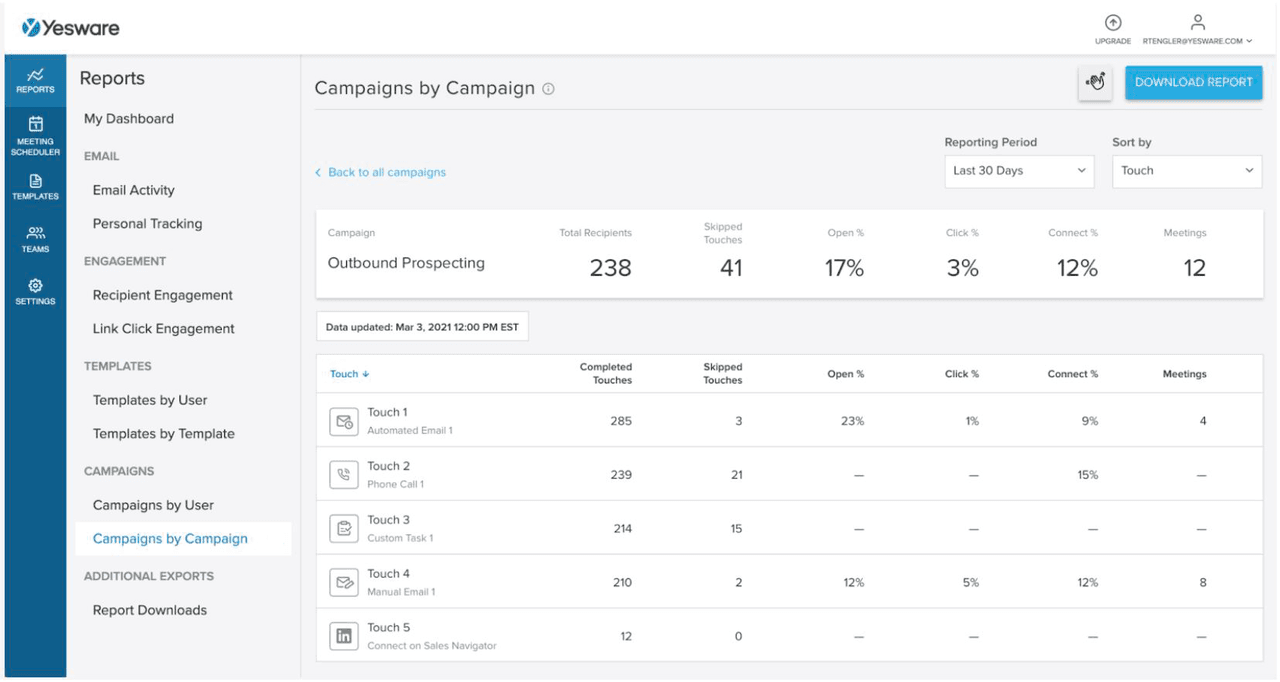
Interested in trying out Yesware? Try here for free.
Use these examples and best practices when writing your next follow-up email subject line, and remember to test the success of your emails so you can continue to iterate and improve.
This guide was updated on June 20, 2023.
Get sales tips and strategies delivered straight to your inbox.
Yesware will help you generate more sales right from your inbox. Try our Outlook add-on or Gmail Chrome extension for free, forever!
Related Articles
Jenny Keohane
Jenny Keohane
Melissa Williams
Sales, deal management, and communication tips for your inbox
